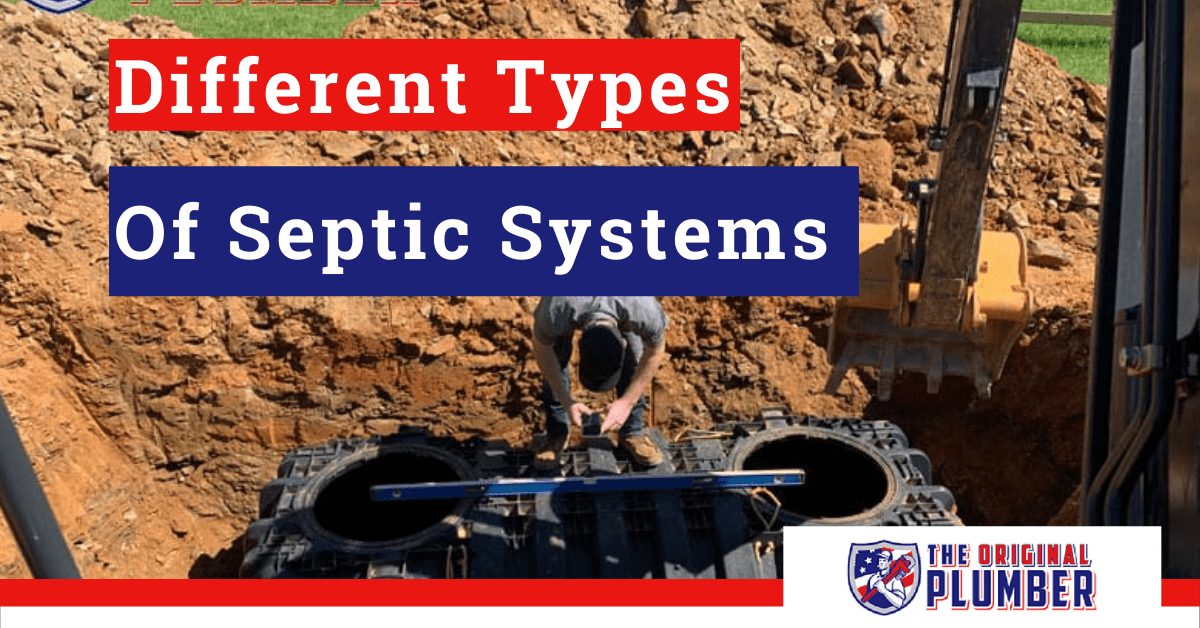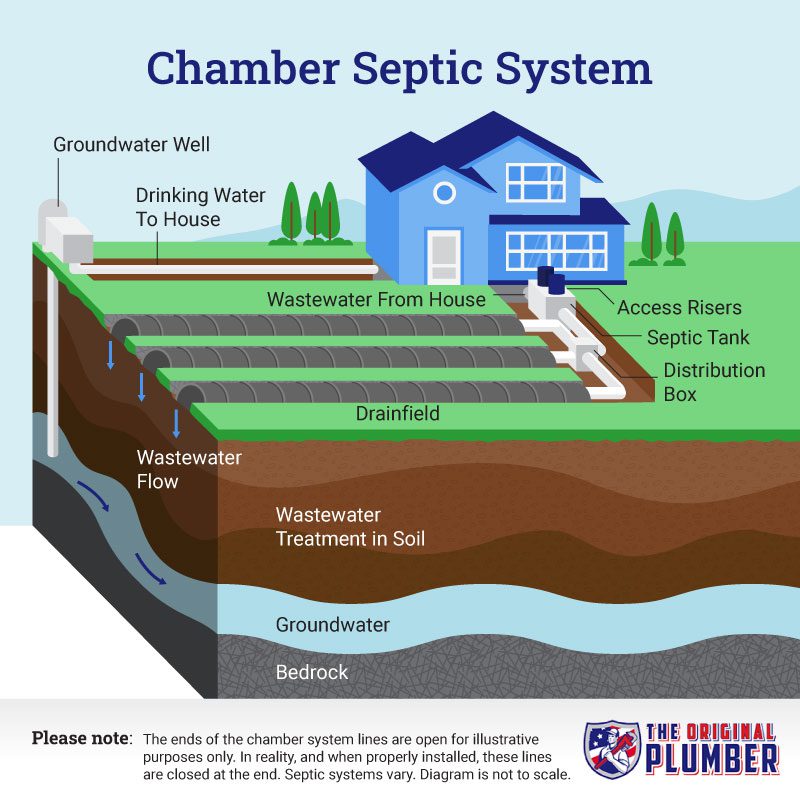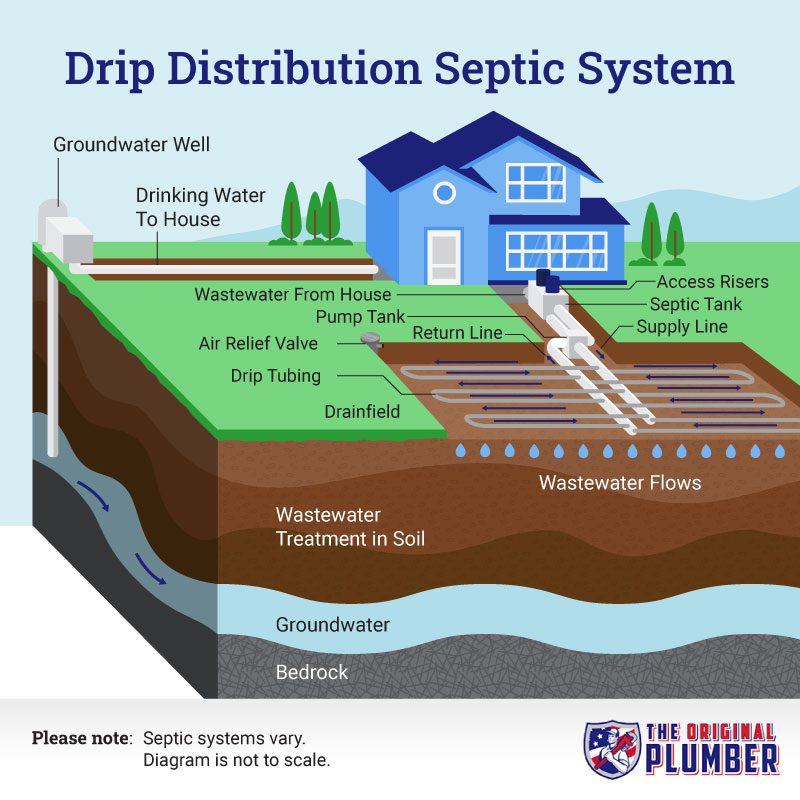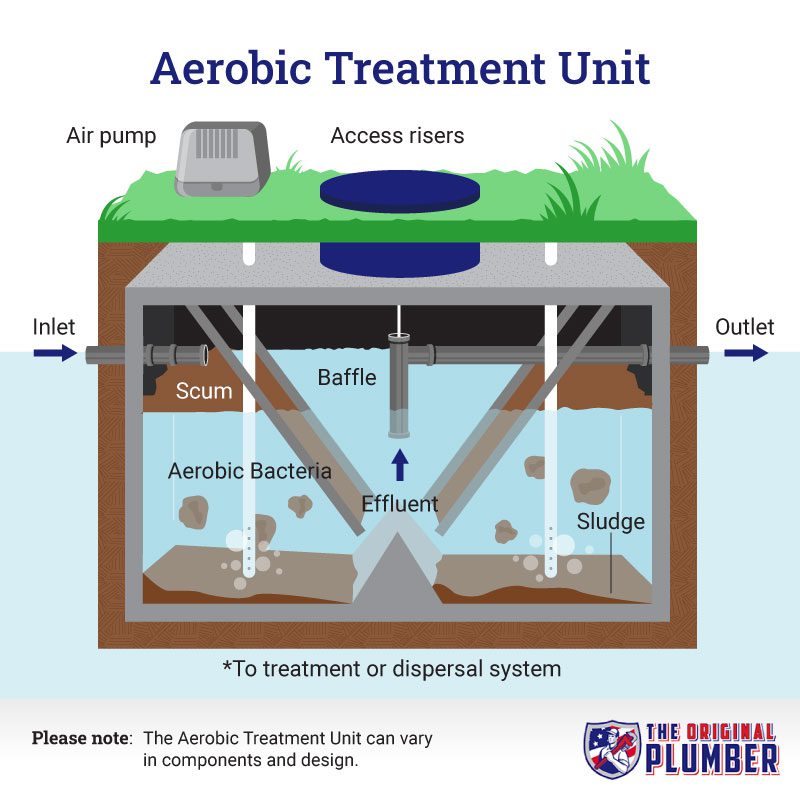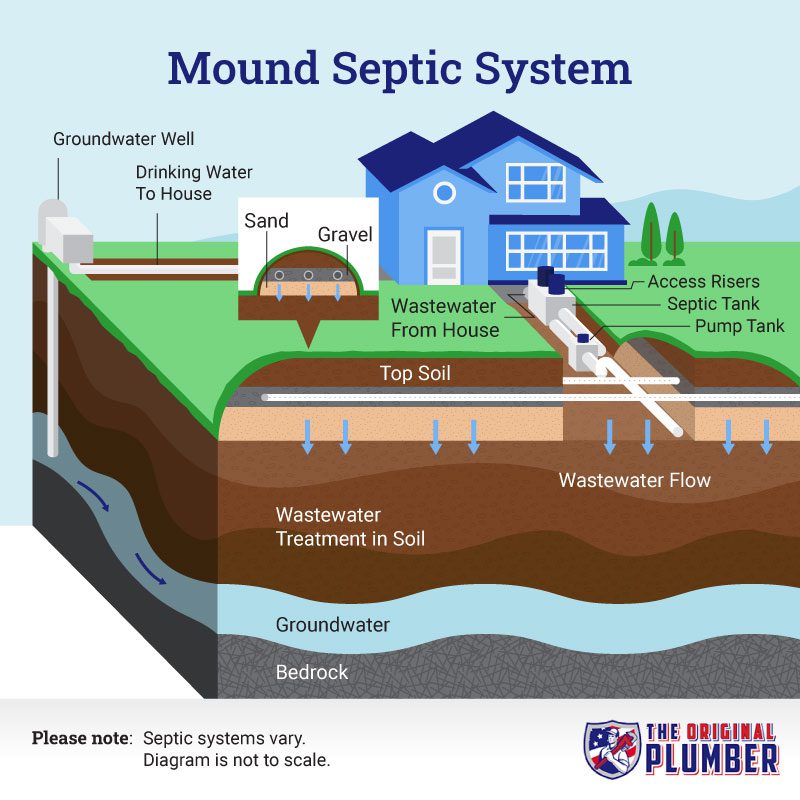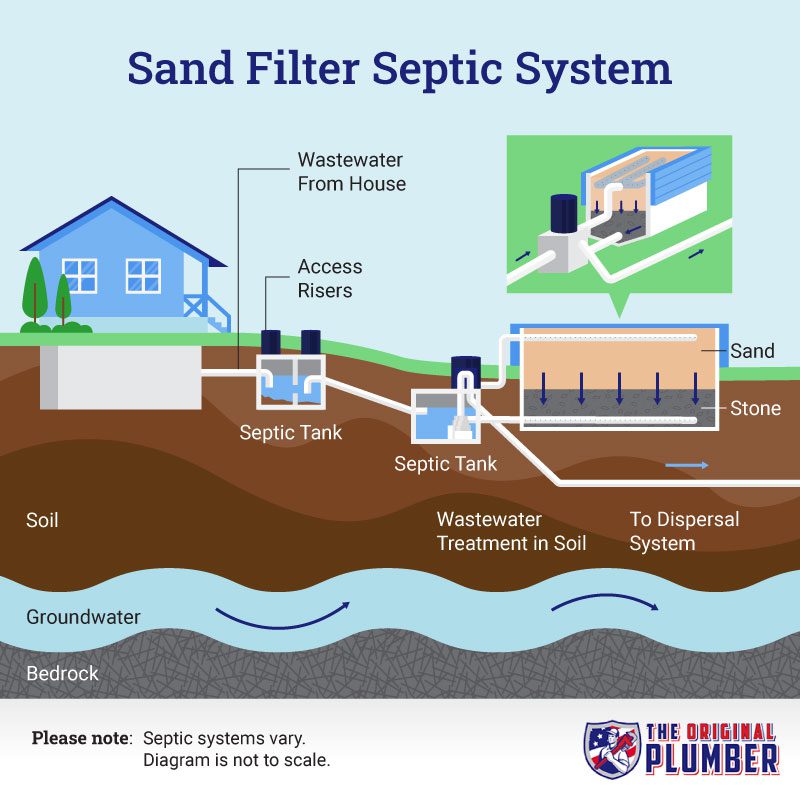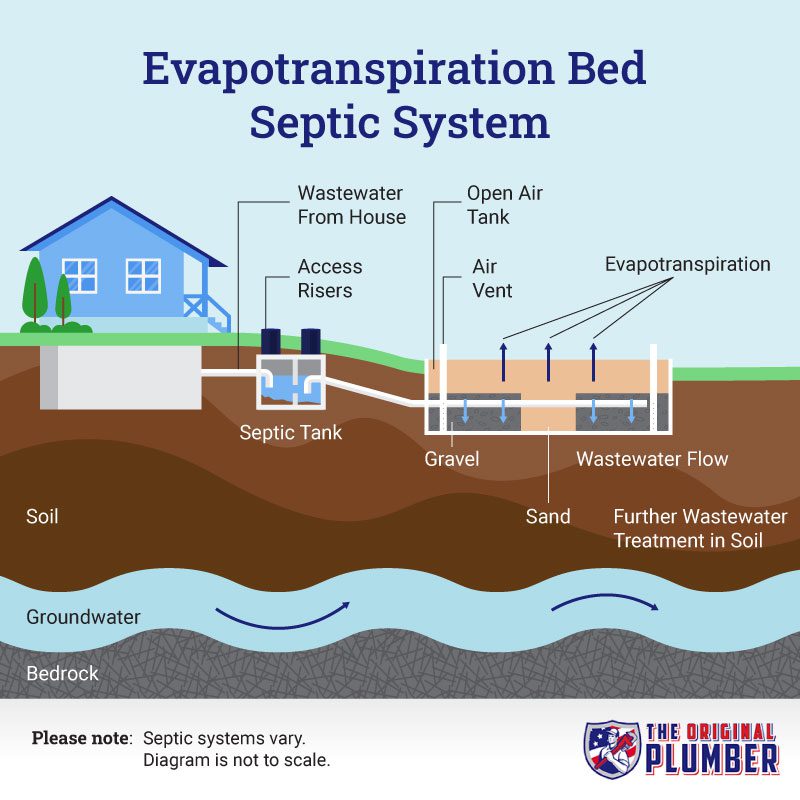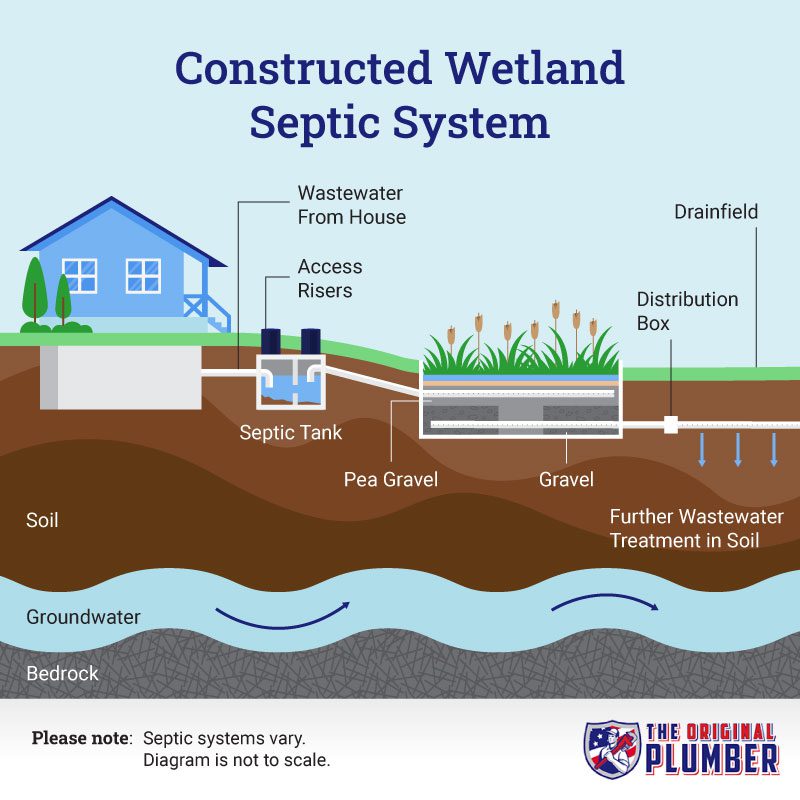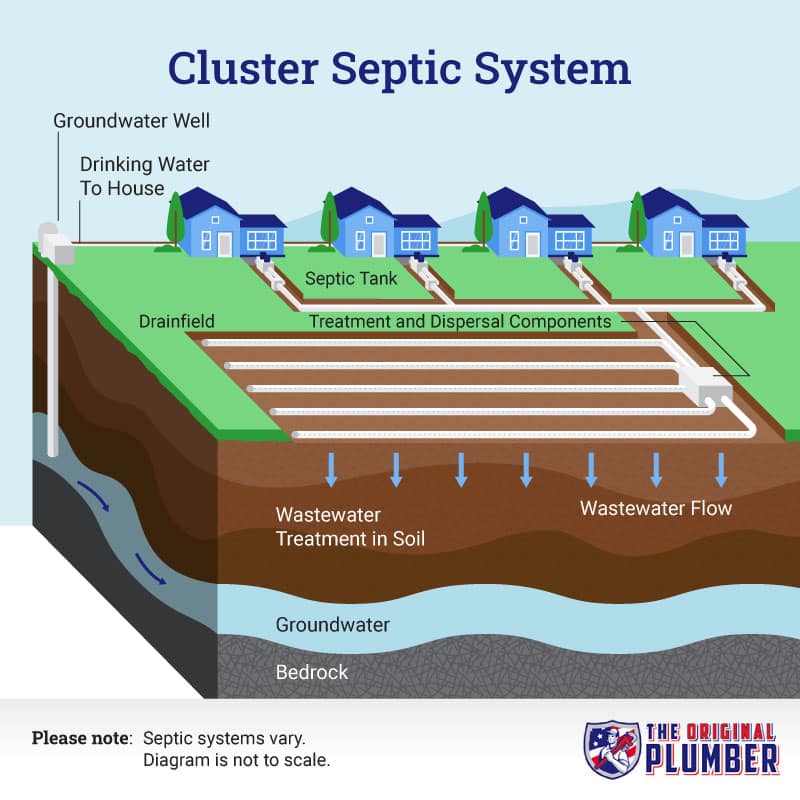How Septic Systems Work
A septic system usually consists of a variety of different interconnected parts. There is always a septic tank into which your waste is placed and a drainage option. There may occasionally be pump tanks to consider as well.
The drainage option ensures that your wastewater is cleaned into regular water before being reintroduced into the environment. Depending on where you live, a septic system can look incredibly different.
Popular Types Of Septic Tanks
Tanks are an important part of your home, but there are many different types of septic tanks.
Depending on your kind of home, the area you live in, and the design of your home, you could have any one of these individual types of septic tanks.
We’re going to go over a large number of popular types of septic systems to see which septic system options are available.
Your waste moves through a sewage pipe to your septic treatment tank, where bacteria break it down; the wastewater then moves the particles out into a drain field where your waste is filtered and reintroduced back into the environment.
This is a safe and effective way to handle your waste, but what are the differences between each kind of septic system?
Conventional Septic Systems
A conventional septic system is one of the most common septic systems available.
This septic tank is set into the ground in a large container, usually circular and plastic or metal. It’s used in conjunction with a drain field which helps to eliminate the wastewater.
This is a standard septic tank model and the most common one available.
This type of tank is also one of the most affordable ones on the market, making it an excellent decision for those looking to replace their septic system.
Chamber System
One of many septic system options that uses a trench distribution method is a fabulous system. This system uses more extensive trenches than many other systems for distribution.
Wastewater flows its way down through the septic system and then into the soil, being treated as it moves down to the groundwater again.
Drip Distribution System
The drip distribution system, also known as a pressure distribution system, is also used in many drain fields. This system uses a large amount of piping but requires much less disruption of a lawn to put in place. It uses a pump chamber to move the water through the system.
The sewer system is set up much like a chamber system but changes after the septic tank. The drip system for wastewater flows is instead placed throughout a large set of piping to help disperse it carefully so it can adequately treat it in the soil.
Aerobic Treatment Unit
Aerobic systems are one of many types of septic tanks that use alternative methods to encourage bacterial growth. This tank uses an air pump to pump oxygenated air down into the system.
This oxygen encourages the bacteria to repopulate faster and work better, ensuring that your waste is handled more efficiently than in an average septic tank.
An aerobic septic system is incredibly efficient at managing waste and can be one of the best options available, though it isn’t the least expensive option.
Mound Systems
Mound systems are a bit different. This kind of septic system has its distribution set inside of a mound of sand, forming sand filters. This sand is built in a large mound, giving the tank more space to distribute your waste. This type of tank is one where you need to take soil type into account as soil conditions are incredibly important to consider when installing a tank.
One of the most efficient wastewater treatment processes this system takes the health of the water table into account. This system is best for individuals who need an economic smell free system with a little bit of space to put a septic system in.
Recirculating Sand Filter System
Another one of the many septic system options is the sand filter type of system. This system has more physical parts to install, with not one but two septic tank areas and a built-in sand-based filter system.
The sand filter system sits above ground a little bit, but this system can be used with any number of final distribution methods we’ve discussed above.
A sand filter septic system is an excellent option for a septic system replacement and can last for years.
Evapotranspiration System
The Evapotranspiration bed system is one of the most unique septic systems as it’s specifically designed to be more about evaporation instead of underground wastewater disposal.
It has both methods, but most of the wastewater evaporates, making it one of the best environmentally friendly wastewater management options.
This evaporation-based system is an excellent choice for the environment and helps you keep a clean and efficient septic system.
Constructed Wetland System
This is one of many septic systems options designed for a more wetland-based living area. Created with a pea gravel filter system instead of a sand-focused one, this system is perfect for areas that are already incredibly moist.
The installation process is a lot like installing a sand filtration system. This system is one of the best options for a home built on a wetland area as it’s designed to work with the nearby water system to filter your wastewater, so it’s safe to be reused.
Cluster / Community System
A cluster septic system is integrated explicitly into suburban areas. This ensures that you have your own tank, but the distribution system works as a single system that links all the septic tanks together.
This is an excellent and most cost-efficient system for a large suburban area but isn’t the best choice for a single home. A septic tank system that’s built like this may not even be your responsibility. Instead, it may be under a different individual’s jurisdiction depending on how your area is framed in a legal sense.
Take a look at your area’s building codes, or call your county office for more information.
Concrete Septic Tank
Concrete septic tanks are not safe to use. These tanks don’t have a solid foundation to work with, nor do they efficiently retain your waste. Concrete septic systems built with cinder blocks are usually incredibly old and far more expensive than your plastic options.
They’re most commonly found on many decades-old properties, and oftentimes they need to be replaced quickly. They’re incredibly inefficient at managing treated wastewater.
If they’re not replaced, they can continue contaminating the space around them. Depending on the age of the system, it may even leak into your drinking water, causing severe illness without you even knowing.
If your property has a concrete septic tank, you should look at the other options on this list to see what replacement system will best benefit you.
Outdated Septic Systems
Outdated septic systems are usually older systems built without much environmental consideration. Outdated septic tanks are a severe danger to both the environment and your health. How dangerous your tank is going to depend on what kind of tank it is.
Septic Tanks
Septic tanks can fail for a wide variety of reasons, from severe damage to age. Septic tanks have a lifespan, between usually twenty to fifty years old; afterward, they need to be replaced.
If you maintain them well, you’ll be able to ensure they last for much longer. You don’t even have to do septic tank maintenance; here at Original Plumber, we can tackle maintaining your tank ourselves. All you need to do is call.
Cesspools
Cesspools are cylinders buried under the ground with no bottom and holes throughout the sides. These cesspools are almost completely illegal as they’re not usually installed with the water table in mind.
Many leak out into rivers, lakes, ponds, and more. If you have a cesspool, your best bet is to have it replaced with a legitimate system.
Seepage Pit
A seepage pit is usually installed after your septic tank itself, but like a cesspool, it’s an outdated form of waste management that can easily damage drinking water and natural water sources around you.
Why You Should Replace Outdated Systems
Outdated septic systems are a huge danger to the environment and can even endanger your physical well-being. If your wastewater manages to get into your drinking water, you could become violently ill and need hospitalization.
Maintaining your tank system
Regardless of what kind of septic tank you have, it’s essential to ensure that your septic tank doesn’t have any cracks, breaks, or any other issues. There are a wide variety of different things that could go wrong with your tank.
For example, if someone drives over your tank, it could crack or collapse it, making for quite the mess to clean up. Regular septic system maintenance every three to five years not only cleans out your tank but also helps locate any issues.
FAQs
What is the alternative to a septic tank?
There are many alternatives to septic tanks, but there are only a handful of reasons to use them. For example, if your land has an abundance of bedrock, it’ll be impossible to dig a hole for your septic tank.
What is the least expensive septic system?
A conventional septic tank system is one of the best types of septic tank systems if you’re looking for an affordable option. It will be an average of $3000 for a full installation of a conventional septic tank.
Can you install a septic tank without a leach field?
You can, it isn’t legal, nor is it good for the environment at all. If you don’t have a leach field, your waste likely drains into a ditch or into a body of water, contaminating everything from your neighbors well water to endangered wildlife. It’s always best practice to have an appropriate leach field.
What is the most common type of septic system?
The most common type of septic system tank is the conventional septic tank.
With a less expensive installation process and a complete way to manage waste, the conventional system is one of the best types of septic system available for those on a budget.
It’s also a great pick for those that are frugal, helping you save money in the long run.
Call The Original Plumber & Septic today for a free consultation. We’re available seven days a week to help with all of your septic and plumbing needs for your home or business. One of our friendly and professional team members will be able to answer your questions. We offer a wide range of affordable services for septic systems, including septic tank installation.


